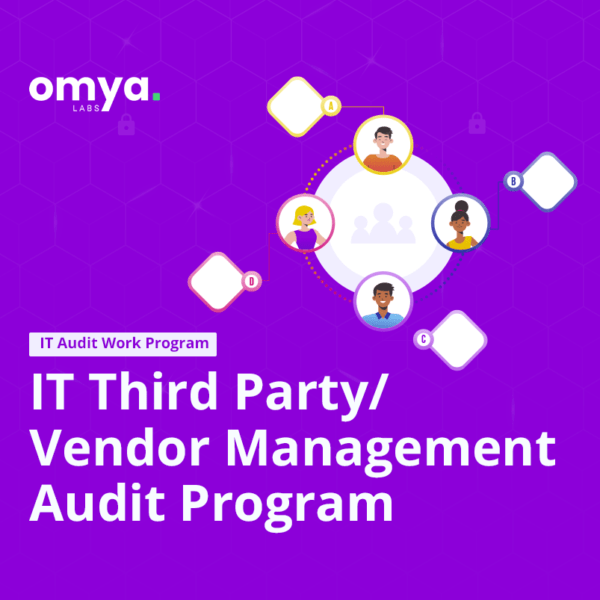We provide you with not 1 but 2 IT Third Party /Vendor Management Audit programs that contain everything you need to perform a comprehensive review of the Third Party / Vendor Management in your company.
On top of it, we provide you with an hour of free consulting to discuss any queries that you may have.
Risk-Free Assurance:
Your satisfaction is our top priority. That’s why we provide a 100% money-back guarantee – a testament to our confidence in this audit program.
Objectives of the Audit Program(s)
- Evaluate if the IT department has established risk-based policies for governing the outsourcing process.
- Review and assess controls of vendor-provider selection processes and service-provider contract processes.
- Assess the due diligence process of the service provider.
- Check the service contracts and service-provider relationships.
Frequently Asked Questions
1. What is IT Third Party Risk Management Audit ?
IT Third Party Risk Management (TPRM) is the process of evaluating and assessing the security and compliance practices of third-party vendors and service providers that have access to or handle an organization’s sensitive data or provide critical services.
In simple words, an IT Third-Party Risk Management audit is like a security checkup for companies that use other companies’ services or products.
2. What is the purpose of Third Party Risk Audit ?
IT Third-Party Risk Management audit serves as a critical process for organizations to assess, monitor, and manage the risks associated with their external relationships. It helps protect the organization’s assets, data, reputation, and financial stability while ensuring compliance with legal and regulatory requirements.
3. What are third party risks ? Give some Examples
- Data Security Risks:
- Risk: Third-party vendors may have access to sensitive data, increasing the risk of data breaches or unauthorized access.
- Example: A cloud storage provider suffers a security breach, exposing confidential customer data.
- Compliance and Regulatory Risks:
- Risk: Vendors may not comply with industry regulations or internal compliance standards, leading to legal and regulatory issues.
- Example: A third-party payment processor mishandles credit card data, resulting in non-compliance with Payment Card Industry Data Security Standard (PCI DSS) requirements.
- Operational Risks:
- Risk: Dependency on third parties for critical services may lead to disruptions in operations if the vendor experiences downtime or service interruptions.
- Example: An organization’s primary cloud service provider experiences a network outage, impacting business operations.
- Financial Risks:
- Risk: Financial instability of third-party vendors, such as bankruptcy, can disrupt services or result in contractual disputes.
- Example: A software vendor goes bankrupt, leaving an organization without access to essential software and support.
- Supply Chain Risks:
- Risk: Suppliers may face production or delivery delays due to factors like natural disasters, affecting product availability.
- Example: A key component supplier experiences delays in production due to a factory fire, causing delays in manufacturing.
- Reputation Risks:
- Risk: Negative actions or controversies involving third parties can harm an organization’s reputation.
- Example: A supplier is exposed for unethical labor practices, damaging the reputation of the companies that use their products.
- Hidden Costs:
- Risk: Unforeseen expenses, such as hidden fees or additional charges, may arise from third-party relationships.
- Example: A software licensing agreement includes undisclosed fees for technical support, increasing overall costs.
- Loss of Control:
- Risk: Limited control over third-party operations can make it challenging to ensure alignment with security and compliance standards.
- Example: An outsourced IT service provider makes unauthorized changes to the network configuration, leading to security vulnerabilities.
- Vendor Reliability:
- Risk: Vendors may consistently fail to meet obligations, causing project delays or increased costs.
- Example: A software development vendor repeatedly misses project deadlines, affecting project timelines.
- Ethical Risks:
- Risk: Third-party vendors engaged in unethical or illegal activities can pose reputational and legal risks.
- Example: A vendor is involved in a corruption scandal, damaging the reputation of organizations associated with them.
These examples illustrate the diverse range of risks that organizations face when engaging with third-party vendors or service providers. Effective third-party risk management involves assessing and mitigating these risks to protect the organization’s interests and reputation.








Reviews
There are no reviews yet.